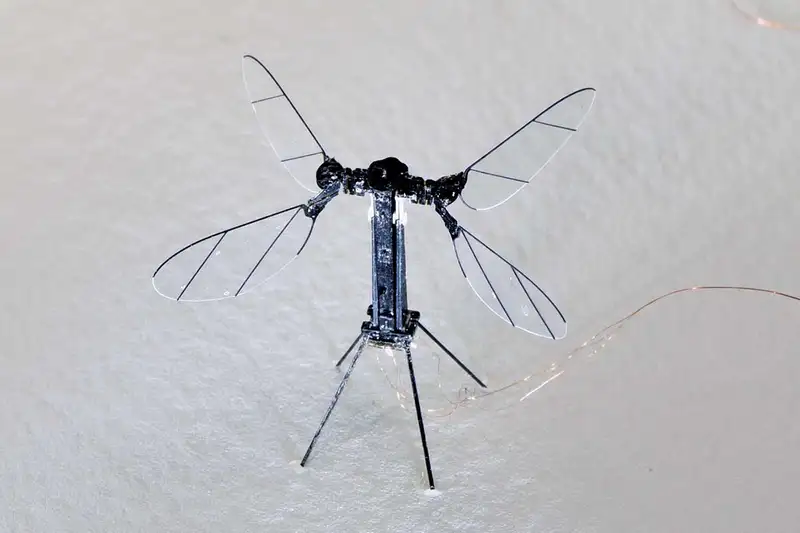
Tiny flying insect robot has four wings and weighs under a gram
A solar-powered flying robot has become the lightest machine capable of flying without an attached power source.
Weighing just 259 milligrams, the insect-inspired RoboBee X-Wing has four wings that flap at a rate of 170 times per second. It has a wingspan of 3.5 CM and is 6.5 CM high.
The flying robot was developed by Noah Jafferis and colleagues at Harvard University.
Its wings are controlled by two muscle-like plates that contract when voltage passes through them. They are powered by six tiny solar cells weighing 10 milligrams each, which are located above the wings so as not to interfere with flight.
The insect robot’s wings begin flapping when exposed to light. Currently, it has only been tested in the lab, where it is powered by a combination of halogen and LED lighting.
Limited by the positioning of the artificial lighting, the robot normally flies for around half a second before it flies out of the field of light. The robot currently requires the equivalent of three times the intensity of natural sunlight, so isn’t yet able to fly outside.
In future versions, the team hopes to enable the robot to fly in regular sunlight, and wants to build sensing mechanisms in. It can then really control what it’s doing when it’s flying around.
Unlike the RoboBee X-Wing, this robot propels itself upwards using electrohydrodynamic thrust. An electric field creates charged air molecules that smack into neutral air molecules, generating upward momentum.
 English
English Arabic
Arabic


